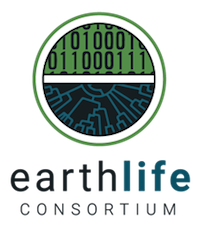ELC: Introduction¶
The EarthLife Consortium (ELC) seeks to make all paleobiological data easily discoverable, accessible, and analyzable, with the larger goal of understanding the interactions between the Earth’s biological and geophysical systems across all timescales of the Earth’s history.
Please report issues on GitHub or send email to earthlifeconsortium@gmail.comOverview¶
ELC brings together paleobiological databases so that they share a single set of Internet-based commands by which researchers and the public can easily access fossil records from all of Earth history. By coordinating with other emerging efforts in geological and biological data sharing, best practices, and protocols, we ensure that data will be freely available to all, enabling new scientific syntheses and discovery, more powerful educational opportunities, and general exploration of the history of life on Earth.
Currently Included Databases:
- The Paleobiology Database (PBDB)
- Neotoma Paleoecology Database (Neotoma)
- Strategic Environmental Archaeology Database (SEAD)
 Support from NSF EarthCube ICER 1540997
Support from NSF EarthCube ICER 1540997

Benefit to scientists¶
- Improve and expand the interoperability of CI within the paleobiosciences.
- Promote the sharing and use of paleobiological data within and outside the discipline but especially within closely allied geoscience and bioscience disciplines.
- Build interoperability between this paleobioscience CI and current and emergent CI in the biosciences, particularly with respect to networks of biodiversity and ecological databases.
- Establish a 4D framework for life and its physical environments.
Project Deliverables¶
- Data API
- A core mission of the EarthLife Consortium is the development of an application programming interface (API) which will simultaneously query the Paleobiology Database (PBDB) and the Neotoma Paleoecology database. Resulting subqueries to these databases are processed and reformatted by the ELC API to provide the end user with comparable data objects. The goal of this composite API is to bridge the differences in time resolution and nature of holdings between the databases. Click below to explore the API, select each endpoint for documentation and an interactive interface.
- Extensibility
- Establish harmonized Web Application Programming Interfaces (APIs) and Web services between Neotoma and PBDB, with capability for extension to other related databases.
- Data holdings
- Fully incorporate six other databases into Neotoma, employing a common database structure and a distributed governance approach based on virtual constituent databases.
- Common vocabulary
- Establish a common data interchange standard between these resources and contemporary biodiversity databases (e.g. BISON/GBIF, iDigBio) by adopting the Darwin Core format and further extending it for use with additional and richer paleobiological data elements.
- End-user tools
- Build open-source analytical toolkits using R, the open-source scientific and statistical programming language, and create a clearinghouse for sharing analytical tools developed by the broader community.
- Advisory council
- Establish a Paleobiology Data Advisory Council (PDAC) composed of scientists and information specialists from both the geosciences and biosciences.

